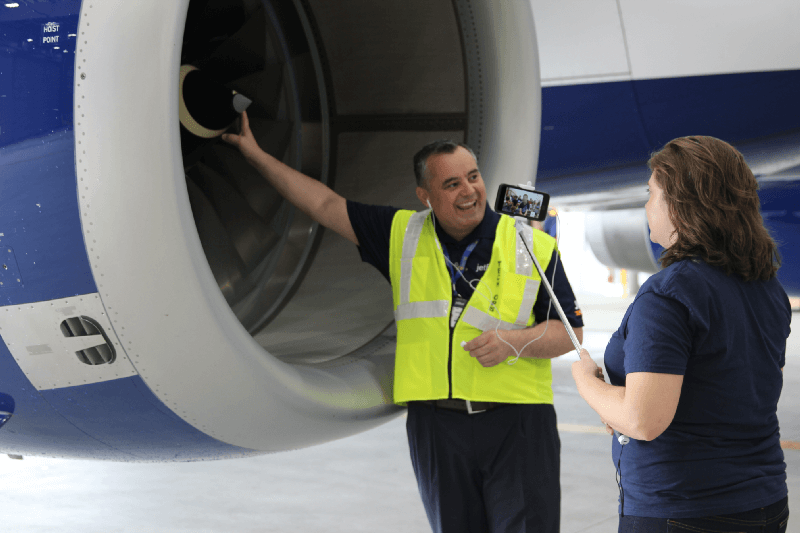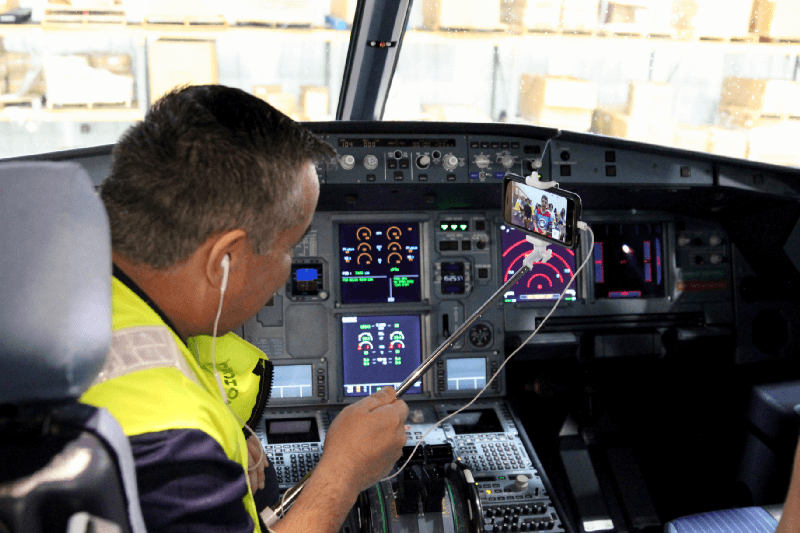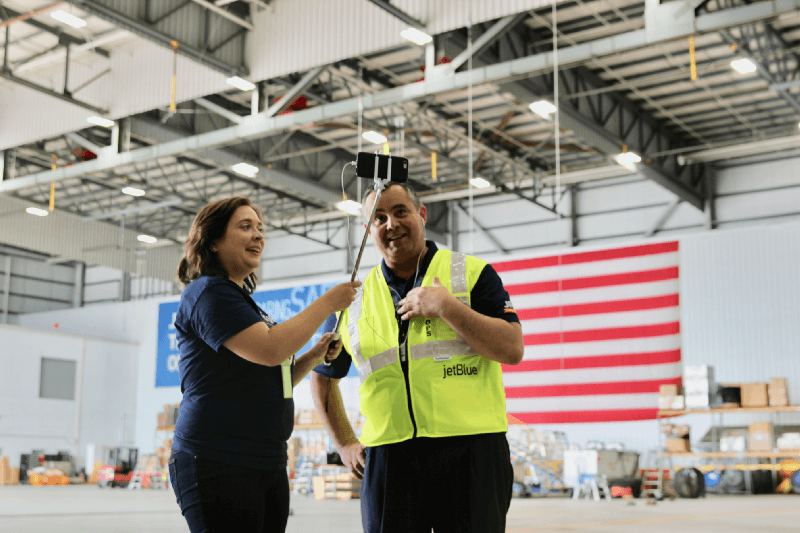In honor of National Aviation Day, DreamWakers partnered with JetBlue to set up a virtual meeting between Archie, Manager of Technical Operations at JFK Airport in New York, and a classroom of middle school students in Bluefield, Virginia. Archie guided students on an exclusive virtual tour of the JetBlue hangar and gave the class a first-hand look at one of JetBlue’s brand new aircrafts, the Airbus 320. It was an incredible learning experience for all involved, including those of us on the DreamWakers team who got to visit behind-the-scenes and in person. Here are five key takeaways DreamWakers students learned from their time with JetBlue:
- Science and engineering are at the heart of the airline industry. For example, the JetBlue is primarily made up of two different aircraft models: the A320 and the A190. A B500 engine for one of the Airbus aircraft costs $9 million. On the front of each engine is a high-bypass fan that produces 90% of the thrust for the aircraft. Behind the fan is the “big bang” section of an engine, which produces temperatures of 1300 degrees celsius (upwards of 2,000 degrees fahrenheit). It takes about 10–12 hours to change an engine, and JetBlue has 10 spare engines for its aircrafts all over the country.

2. All JetBlue airplanes have the word “blue” or “mint” in their names! Some names include: “Keep Blue and Carry On,”“The Royal Treatmint,” and “It Takes Blue to Tango.”
3. There are white strips of rubber on each of the engine fans to keep birds away. As the fan spins, the birds see the white line spinning and (hopefully!) stay away. This unique strip is made out of rubber to prevent ice from accumulating on the fan, and to help keep the engines moving.
4. An airplane is in many ways a large super-computer. In each personal computer, there are hundreds of central processing units, or CPUs, and in an airplane there are thousands. They are contained in various temperature-controlled locations of the airplane alongside special ducts that prevent the airplane from freezing (at altitude, a plane will reach negative 68–80 degrees celsius).

5. The pilot and co-pilot sit in what JetBlue calls the “flight station,” where they control the aircraft with a joystick — similar to what you might see in a video game console at home! Both the pilot and co-pilot have access to their own joystick so that either one might control the plane at any given time, and so that there is a backup in case one malfunctions.
Our JetBlue tour guide Archie received a degree in Mechanical Engineering from UC Davis, and has been with the company for 10 years. When Archie was just 17 and beginning his career in the Marine Corps, he had never been in an airplane. As soon as he started working on airplanes (his first was a C130) his love for airplanes was born. Despite having even been in a plane crash in his earlier days, Archie still maintains that airplanes are his passion. “I’ve been around airplanes a long, long time. This is my passion. I absolutely love airplanes — I spend my entire day here at the airport, many times on a weekend, but I can’t describe to you how well it makes me feel when I see these airplanes take off every single day, knowing that I had a part in [it].”

Today, Archie oversees the technical operations at JFK Airport for JetBlue to ensure that flights go out safely and on time. When asked if there was another job Archie would have if he didn’t work where he does now, he responded: “You know, there’s a lot of jobs out there that a person can do, but for me, my passion is airplanes. I love airplanes, so here I am.”
To learn more about JetBlue and it’s “Tech Ops” team, click here.
Companies interested in partnering with DreamWakers, click here.
Teachers, want to being the real-world into your classroom? Click here to host a virtual DreamWakers chat. Please note DreamWakers serves schools where at least 50% of the student body is on free or reduced lunch.


